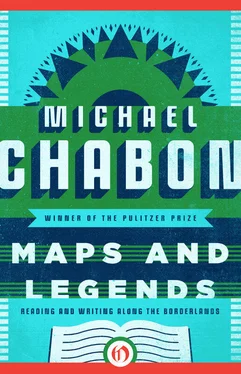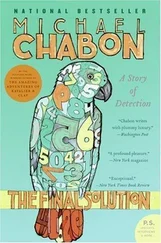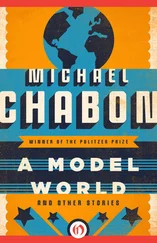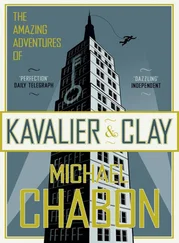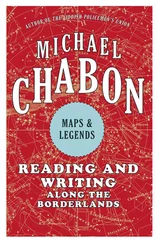The appearance of realism in a superhero costume made from real materials is generally recognized to be difficult to pull off, and many such costumes do not even bother to simulate the presumable effect on the eye and the spirit of the beholder were Black Bolt to stride, trailing a positronic lace of Kirby crackle, into a ballroom of the Overland Park Marriott. This disappointing air of saggy trouser seats, bunchy underarms, and wobbly shoulder vanes may be the result of imaginative indolence, the sort that would permit a grown man to tell himself he will find gratification in walking the exhibition floor wearing a pair of Dockers, a Jägermeister hoodie, and a rubber Venom mask complete with punched-out eyeholes and flopping rubber bockwurst of a tongue.
But realism is not, in fact, merely difficult; it is hopeless. A plausibly heroic physique is of no avail in this regard, nor is even the most fervent willingness to believe in oneself as the man or woman in the cape. Even those costumed conventioneers who go all out, working year-round to amass, scrounge, or counterfeit cleverly the materials required to put together, with glue gun, soldering iron, makeup, and needle and thread, a faithful and accurate Black Canary or Ant-Man costume, find themselves prey to forces, implacable as gravity, of tawdriness, gimcrackery, and unwitting self-ridicule. And in the end they look no more like Black Canary or Ant-Man than does the poor zhlub in the Venom mask with a three-day pass hanging around his neck on a lanyard.
This sad outcome even in the wake of thousands of dollars spent and months of hard work given to sewing and to packing foam rubber into helmets has an obvious, an unavoidable, explanation: A superhero’s costume is constructed not of fabric, foam rubber, or adamantium but of halftone dots, Pantone color values, inked containment lines, and all the cartoonist’s sleight of hand. The superhero costume as drawn disdains the customary relationship in the fashion world between sketch and garment. It makes no suggestions. It has no agenda. Above all, it is not waiting to find fulfillment as cloth draped on a body. A constructed superhero costume is a replica with no original, a model built on a scale of x:1. However accurate and detailed, such a work has the tidy airlessness of a model-train layout but none of the gravitas that such little rail yards and townscapes derive from making faithful reference to homely things. The graphic purity of the superhero costume means that the more effort and money you lavish on fine textiles, metal grommets, and leather trim, the deeper your costume will be sucked into the silliness singularity that swallowed, for example, Joel Schumacher’s Batman and Robin and their four nipples.
In fact, the most reliable proof of the preposterousness of superhero attire whenever it is translated, as if by a Kugelmass device, from the pages of comics to the so-called real world can be found in film and television adaptations of superhero characters. George Reeves’s stodgy pajamas-like affair in the old Superman TV series and Adam West’s mod doll clothes in Batman have lately given way to purportedly more “realistic” versions, in rubber, leather, and plastic, pseudo-utilitarian coveralls that draw inspiration in equal measure from spacesuits, catsuits, and scuba suits, and from (one presumes) regard for the dignity of actors who have seen the old George Reeves and Adam West shows and would not be caught dead in those glorified Underoos. In its attempts to slip the confines of the paneled page, the superhero costume betrays its nonexistence, like one of those deep-sea creatures that evolved to thrive in the crushing darkness of the seabed, so that when you haul them up to the dazzling surface they burst.
One might go further and argue not only that the superhero costume has (and needs) no referent in the world of textiles and latex but also that, even within its own proper comic-book context, it can be said not to exist, not to want to exist — can be said to advertise, even to revel in, its own notional status. This illusionary quality of the drawn costume can readily be seen if we attempt to delimit the elements of the superhero wardrobe, to inventory its minimum or requisite components.
The Silver Gluteal Cleft of the Spaceways
We cart start by throwing away our masks. Superman, arguably the first and the greatest of all costumed heroes, has never bothered with one, nor have Captain Marvel, Luke Cage, Wonder Woman, Valkyrie, and Supergirl. All those individuals, like many of their peers (Hawkman, Giant-Man), also go around barehanded, which suggests that we can safely dispense with our gauntlets (whether finned, rolled, or worn with a jaunty slash at the cuff). Capes have been an object of scorn among discerning superheroes at least since 1974, when Captain America, having abandoned his old career in protest over Watergate, briefly took on the nom de guerre Nomad, dressed himself in a piratical ensemble of midnight-blue and gold, and brought his first exploit as a stateless hero to an inglorious end by tripping over his own flowing cloak.
So let’s lose the cape. As for the boots — we are not married to the boots. After all, Iron Fist sports a pair of kung-fu slippers, the Spirit wears brown brogues, Zatanna works her magic in stiletto heels, and Beast, Ka-Zar, and Mantis wear no shoes at all. Perhaps, though, we had better hold on to our unitards, crafted of some nameless but readily available fabric that, like a thin matte layer, at once coats and divulges the splendor of our musculature. Assemble the collective, all-time memberships of the Justice League of America, the Justice Society of America, the Avengers, the Defenders, the Invaders, the X-Men, and the Legion of Super-Heroes (and let us not forget the Legion of Substitute Heroes), and you will probably find that almost all of them, from Nighthawk to the Chlorophyll Kid, arrive wearing some version of the classic leotard-tights ensemble. And yet — not everyone. Not Wonder Woman, in her star-spangled hot pants and eagle bustier; not the Incredible Hulk or Martian Manhunter or the Sub-Mariner.
Consideration of the last named leads us to cast a critical eye, finally, on our little swim trunks, typically worn with a belt, pioneered by Kit Walker,* the Phantom of the old newspaper strip, and popularized by the super-trendsetter of Metropolis. The Sub-Mariner wears nothing but a Eurotrashy green Speedo, suggesting that, at least by the decency standards of the old Comics Code, this minimal garment marks the zero degree of superheroic attire. And yet, of course, the Flash, Green Lantern, and many others make do without trunks over their tights; the forgoing of trunks in favor of a continuous flow of fabric from legs to torso is frequently employed to lend a suggestion of speed, sleekness, a kind of uncluttered modernism. And the Hulk never goes around in anything but those tattered purple trousers.
So we are left with, literally, nothing at all: the human form, unadorned, smooth, muscled, and ready, let’s say, to sail the starry ocean of the cosmos on the deck of a gleaming surfboard. A naked spacefarer, sheathed in a silvery pseudoskin that affords all the protection one needs from radiation and cosmic dust while meeting Code standards by neatly neutering one, the shining void between the legs serving to signify that one is not (as one often appears to be when seen from behind) naked as an interstellar jaybird.
Here is a central paradox of superhero attire: From panther-black to lantern-green, from the faintly Hapsburg pomp of the fifties-era Legion of Super-Heroes costumes to the “Mad Max” space grunge of Lobo, from sexy fishnet to vibranium — for all the mad recombinant play of color, style, and materials that the superhero costume makes with its limited number of standard components, it, ultimately takes its deepest meaning and serves its primary function in the depiction of the naked human form, unfettered, perfect, and free. The superheroic wardrobe resembles a wildly permutated alphabet of ideograms conceived only to express the eloquent power of silence.
Читать дальше
Конец ознакомительного отрывка
Купить книгу
